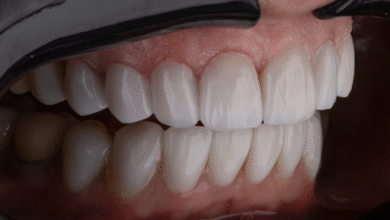Nanomedicine’s Role in Global Health: Addressing Emerging Diseases

In this speed-evolving world, global health departments face ever-emerging and unexpected challenges, with infectious diseases and conditions affecting major populations worldwide. Nanomedicine, a field combining the power of nanotechnology with medicine, has emerged as a promising solution to combat these threats. Nanomedicine offers innovative approaches in various domains, such as ophthalmology and skincare. This article explores how nanotechnology in ophthalmology and the use of nanoparticles in sunscreen are addressing emerging diseases and contributing to global health.
Nanotechnology in Ophthalmology: Enhancing Vision Health
Our eyes are delicate and intricate organs, susceptible to various kinds of ailments and disorders. Nanotechnology in ophthalmology has opened new avenues for the diagnosis and treatment of eye-related issues. Nanoparticles, particles on the nanoscale, play an important role in improving the daily activities of eye health departments.
Detecting Eye Diseases with Nanosensors
Nanosensors are minuscule devices specially designed to detect and understand specific molecules or substances and are being used to diagnose eye diseases with good precision and accuracy. These sensors have the strong ability to detect biomarkers associated with issues like glaucoma, macular degeneration, and diabetic retinopathy. The early detection of such diseases is important for patients to prevent irreversible vision loss, and nanosensors are making this possible.
Nanoparticles for Drug Delivery
Drug delivery in ophthalmology has been also revolutionized by Nanoparticles in a good manner. Conventional eye drops often provide limited effectiveness due to their low bioavailability. However, nanoparticles can carry drugs directly to the targeted areas within the eyes, ensuring a more efficient and sustained release of eye medication. This accurate eye medicine delivery into the eyes can significantly improve treatment outcomes and reduce side effects.
Innovations in Ocular Implants
Nanotechnology has paved the way for the development of advanced ocular implants. These implants can restore vision to those with certain types of blindness, like retinitis pigmentosa. By integrating nanomaterials and electronic components, these implants can stimulate the remaining healthy cells in the retina and help individuals regain functional vision.
Nanoparticles in Sunscreen: Protecting Against Skin Diseases
Various kinds of skin issues like skin cancer badly affecting our population and have become a challenging global health issue due to increased UV radiation exposure. Nanoparticles in sunscreen formulations are a significant breakthrough in safeguarding our skin against the harmful effects of the sun.
Enhanced UV Protection
Nanoparticles, such as zinc oxide and titanium dioxide, are incorporated into sunscreens to give better protection against UV radiation. These nanoparticles have the ability to reflect and scatter dangerous UV rays ensuring that they do not penetrate the skin because these nanoparticles act as a barrier toward UV rays. This working mechanism has greatly improved the effectiveness of sunscreens in preventing skin damage and reducing the risk of possible skin cancer.
Non-Greasy and Cosmetically Elegant
Nanoparticles have enabled the development of sunscreen products that are non-greasy and cosmetically elegant. Traditional sunscreens often leave a thick, white residue on the skin due to the use of larger particles. With nanoparticles, sunscreens can now be applied smoothly and blend seamlessly with the skin, making them more appealing for daily use.
Long-lasting Protection
Nanoparticles also provide long-lasting protection. Their small size allows for even distribution on the skin, ensuring that the sunscreen remains effective throughout the day. This is particularly important in regions with intense sun exposure, where extended protection is crucial for preventing skin diseases.
Nanomedicine’s Global Impact
Nanomedicine’s contributions to global health are not limited to specific fields like ophthalmology and skincare. It has a broader impact on addressing emerging diseases across the world.
Advanced Diagnostics: Nanotechnology has significantly improved diagnostic tools and techniques. Nanosensors can detect infections and diseases with remarkable sensitivity, which is particularly valuable during disease outbreaks. Rapid and accurate diagnosis allows for timely interventions and containment efforts.
Drug Development and Delivery: The development of nanoscale drug carriers has transformed the way medicines are delivered. For infectious diseases like HIV, cancer, and emerging viral threats, nanocarriers can enhance drug efficacy and reduce side effects. These advancements are crucial in the fight against both common and emerging diseases.
Vaccination Advancements: In the development of vaccines Nanotechnology has also played an important role. Nanoparticles can be utilized as vaccine carriers, improving the stability and efficacy of vaccines. This is especially beneficial in addressing emerging infectious diseases, where swift vaccine development is essential.
Global Access to Healthcare: One more capability of Nanomedicine is it can act as a bridge to healthcare disparities across the world. With the improvement and support of cost-effective and easy-to-manage nanomedicines our remote, developing, and underserved areas can gain better access to healthcare. This inclusivity is vital in addressing emerging diseases in vulnerable populations.
Challenges and Ethical Considerations
While nanomedicine offers substantial benefits, it also comes with challenges and ethical considerations. Ensuring the safety of nanoparticles, ethical research practices, and equitable access to nanomedicine are issues that must be addressed to harness their full potential for global health.
- Nanoparticle Safety
The focused safety of nanoparticles which is used in medicine and various skincare items is an important matter. A detailed and well-researched study is essential for understanding the risks associated with it. Besides, it is also important to ensure that these kinds of particles do not affect our environment or accumulate in the human body.
- Ethical Research and Development
Ethical considerations and understandings in nanomedicine research and development are essential. Eye health researchers must understand the high ethical standards to avoid potential risks and ensure that the benefits of nanomedicine are accessible to everyone. It means everyone in society has the right to get benefits from the facilities in health departments regarding various eye issues.
- Equitable Access
In each and every country health departments should make sure that Nanomedicine is accessible to everyone, irrespective of their geographic location or financial situation. Addressing various health disparities and ensuring that nanomedicine reaches underserved populations should be a priority to maximize its impact on global health.
Conclusion
Nanomedicine has emerged as a powerful ally in the fight against emerging diseases, from eye conditions to skin diseases and beyond. Its applications in ophthalmology, skin protection, diagnostics, and drug delivery are transforming the way we approach healthcare challenges.
However, it is vital to tread carefully, addressing safety concerns and ensuring ethical research practices and equitable access. As we continue to witness the ever-changing landscape of global health, nanomedicine stands at the forefront, offering hope and solutions to address the emerging diseases that threaten our world.




